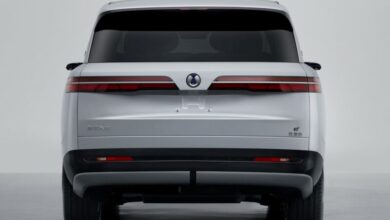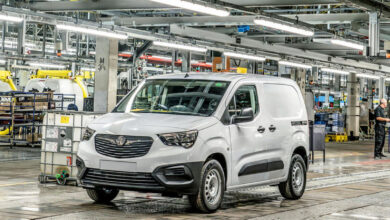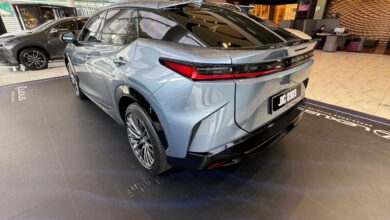US Startup Plans Level 2 EV Charging Stations At Renters, STAT!

Sign up for daily news updates from CleanTechnica on email. Or follow us on Google News!
For all the hand-wringing over an unexpected slowdown in EV sales in recent months, the solutions are staring automakers right in the face. The first item on my checklist: Do a better job appealing to females. Failing that, how about breaking up the bottleneck of EV charging stations for households in apartment buildings and other multi-family dwellings? That would sure pull the rug out from under one of the few advantages still enjoyed by the oil industry — oh, wait, somebody just figured it out.
More EV Charging Stations At Multi-Family Dwellings, STAT!
I’ll get to those female car buyers in a second, but first let’s focus on the charging station situation at apartment buildings and other multifamily dwellings.
Automakers like Ford are beginning to make the case that access to home charging is a key selling point for electric vehicles. Ford CEO Jim Farley recently remarked that an estimated 19 million people in the US have expressed interest in owning an EV, and home EV charging could tip the balance. In a survey commissioned by the company, 90% of car shoppers said they would be interested in buying an EV, but only if home charging was available.
That’s little comfort for the 31% of US households that live in apartment buildings and other multi-family dwellings where on-site EV charging stations are practically non-existent. The US Department of Energy has been compiling case studies of successful multi-family charging station installations, but progress has been incremental.
The meat of the problem is the conventional landlord-tenant setup. Landlords have no interest in shelling out for new electrical infrastructure that doesn’t benefit their bottom line, and renters have no interest in putting up their own money to benefit the property owners.
The 3V Infrastructure EV Charging Station Solution: Money Talks
If you’re wondering why the lack of on-site charging is considered a significant obstacle to EV adoption for apartment dwellers, that’s a good question. After all, few if any apartment buildings have their own on-site gas stations. Everyone who drives a gasmobile, whether they live in a multi-family dwelling or not, is always forced to drive away from their home to fuel up. Why should charging up an electric vehicle be any different?
If you have any thoughts about that, drop a note in the comment thread. One thing to consider is that public charging stations are a relatively new thing. They need to be trustworthy and they need to be available when and where drivers need them, like a familiar gas station. That trust-building exercise will take some time. Until then, the availability of on-site EV charging will be a deal-maker or breaker for prospective buyers.
One solution that surfaced on the CleanTechnica radar is the startup 3V Infrastructure. The firm announced its newly formed self in a press release on August 6, describing a plan to introduce Level 2 charging in multifamily dwellings of 20 units or more. Other targets include hotels and similar locations where drivers stay overnight.
“Research indicates that 27% of apartment tenants are interested in EV charging as an amenity yet fewer than 5% of rental properties offer it. Similarly, 20% of hotel guests expressed a need for EV charging stations when staying overnight,” 3V explains.
To overcome the landlord-tenant roadblock, 3V came into being with a business model that requires no up-front investment from property owners. 3V swoops in with a team of experts to handle permits and utility connections along with other setup chores, and they also take care of ongoing operation and monitoring as well.
That’s going to take some big bucks, and 3V already had that in hand when they announced their launch.
“The company has secured a commitment of up to $40 million from an affiliate of Greenbacker Capital Management, that provides strategic growth capital to leading energy transition companies,” 3V noted in August.
What’s The Big Deal About Level 2 Charging?
A lot of attention has focused on building out the nation’s network of public Level 3 fast-charging stations, with the idea of replicating the speed and convenience of getting a tankful of gas. 3V has spotted an opportunity in the slower-paced world of Level 2 charging.
“3V Infrastructure is hyper-focused on an overlooked and underfunded asset class of EV infrastructure: Level 2 chargers at long-dwell properties,” explains 3V co-founder and CEO Aubrey Gunnels.
“Consumer behavior and market signals indicate that drivers want to charge their vehicles like they charge their cell phones – when they’re at rest for extended periods of time,” Gunnels adds.
3V has not been letting the grass grow under its feet. Earlier this week the firm announced a deal to install charging stations at properties owned by the S&P 500 firm Camden Property Trust. Camden already has thousands of units under its belt and it is currently adding more, towards a goal of almost 60,000 homes among 177 different properties.
In accord with the 3V business model, Camden will incur no costs to make room for the charging stations. The plan is for the California EV charging firm Loop Global to install the initial round of charging stations at Camden properties in Texas, North Carolina, Arizona, and California before expanding elsewhere.
Good, Now Do The EV Sales Gender Gap
Because women are more likely to rent a home than men, installing Level 2 EV charging stations at rental properties could help close the EV sales gender gap somewhat. Consistent access to a secure EV charging station would also alleviate safety and reliability concerns regarding public charging stations in parking lots and other unattended locations. The safety factor is a significant one that consistently comes up in the reporting on the EV sales gender gap.
Last year Edmunds came up with an estimate of just 33% for the proportion of EV sales in the US attributed to women, even though women account for 62% of car sales overall. So, EV staeholders have some catching up to do.
On the plus side, they are beginning to address the safety factor. The IONNA group of EV stakeholders, for example, has come up with an attractive lounge-type model for public fast charging stations. The group, which consists of BMW, GM, Honda, Hyundai, Mercedes-Benz, Kia, Stellantis, and Toyota, just broke ground on its first “Rechargery” in the US, located in the town of Apex in North Carolina’s tech triangle near Raleigh.
“The site will host an indoor driver’s lounge, offering secure access to bathrooms, coffee service, food/beverage, and WIFI to relax or work while your vehicle charges,” IONNA states.
The Apex station is just for starters. IONNA is planning on a network of 30,000 “ultra-fast and reliable” public EV charging ports by 2030.
Aside from that, analysts anticipate that a forthcoming drop in the cost of EV batteries will push the affordability envelope, which could also help attract more female buyers.
Follow me via LinkTree, or @tinamcasey on Threads, LinkedIn, and Instagram.
Photo: The startup 3V Infrastructure plans to blow open the EV charging bottleneck at multi-family dwellings, hotels, and other long-stay locations where access to Level 2 charging can be an especially important consideration for female EV drivers (courtesy of National Renewable Energy Laboratory).







